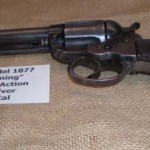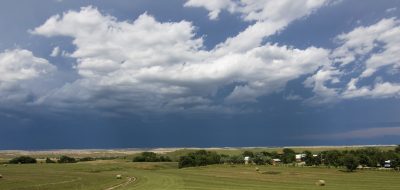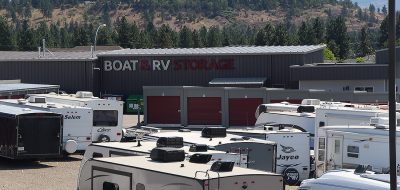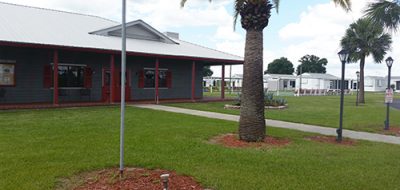We enjoy using our RV as much as possible throughout the year. But when temperatures are approaching freezing, it’s important that you protect it. Last week I talked about preparing your RV’s interior, exterior and chassis for storage during the colder winter months. I mentioned at the beginning of the article that the RV plumbing system is the most vulnerable to damage caused by plummeting temperatures. The good news is it is really quite easy to protect the RV water system from this potential threat.
Before you get started there are a few items you will need to have. These items can be found in most RV parts stores:
- Non-toxic RV/Marine antifreeze. The amount depends on the layout and length of your plumbing lines. Two to three gallons will normally do.
- A water heater by-pass kit, if not already installed.
- A tank wand to clean out the holding tanks, if you don’t have a built-in flushing system.
- A water pump converter kit, or tubing to connect to the inlet side of the water pump.
- Basic hand tools to remove drain plugs.
Note: Be sure to read your owner’s manuals for unit specific winterizing guidelines. Follow the steps below that apply to your RV.
- If you have any inline water filters remove and/or bypass before starting.
- Drain the fresh water holding tank.
- Empty and flush the gray and black water holding tanks if it hasn’t already been done. If the RV doesn’t have a built-in flushing system clean the black tank out with a tank cleaning wand.
- Drain the water heater. Open the pressure relief valve and remove the drain plug.
Caution: Never drain the water heater when hot or under pressure. With no water hooked up to the RV and the water pump off, open a hot water faucet to remove any pressure on the system. Allow sufficient time for the tank to cool before draining.
- Open all hot and cold faucets; don’t forget the toilet valve (pedal or lever) and the outside shower (if equipped).
- Locate and open the low point water drain lines.
- Use the water pump to help force most of the remaining water out of the system, but turn it off as soon as the system is drained to prevent damaging the pump.
Note: It is not necessary to get every drop of water out of the water system, but you want to get most of it out. The non-toxic RV antifreeze will prevent the small amount of remaining water from freezing.
- Recap all drains and close all faucets.
- By-pass the water heater. If you do not have a by-pass kit installed the water heater will fill up with RV antifreeze before it goes through the water lines, wasting six or ten gallons of antifreeze.
Note: A water heater by-pass kit can save you money in two ways. It saves you from using an extra six or ten gallons of non-toxic RV antifreeze when it’s time to winterize your RV, and a bypass kit also prevents costly damage like ruptured water lines or a ruptured water heater tank. If water is left in the lines or tank they can freeze and expand, splitting the lines or tank. With a bypass kit you simply drain the water heater, put it in the by-pass mode and the antifreeze bypasses the tank and goes directly into the water lines.
- Install a water pump converter kit, or disconnect the inlet side of the water pump (the line coming from the fresh water holding tank to the pump) and connect tubing from the water pump inlet into a one gallon jug of RV antifreeze.
- Turn the water pump on and pressurize the system. Starting with the closest faucet to the pump, slowly open the hot and then cold valves until the colored RV antifreeze appears. Replace the antifreeze container as required.
- Repeat this procedure on all faucets from the closest to the farthest away. Don’t forget the outside shower (if equipped).
- Flush the toilet until antifreeze appears.
- Pour a cupful of antifreeze down every drain (all sinks, shower & tub drains).
- Pour some RV antifreeze in the toilet and flush into the holding tank to prevent any water in the tank from freezing.
- If your water heater has an electric heating element, turn it off. This will protect the element if the unit is plugged in (and the switch is on) while in storage.
- Make sure all faucets are closed.
- The unit is winterized.
Note: Consult your owner manuals for unit specific winterizing instructions for icemakers and washing machines.
Now, next spring when it’s time to head out in the RV you won’t have any unpleasant, not to mention costly, surprises waiting for.
Happy Camping,
Mark J. Polk







Jack Benton
Try opening all of your faucets and then using LOW AIR PRESSURE to force the rest of the water through the lines. You could probably use the same method to force the antifreeze through the system.
Dan
The drain outlet on my water heater is about 2.5″ above the bottom of the tank while the inlet tube enters the tank at the bottom of the tank. The manufacturer (Atco) says that there will be “about” 2 quarts of water left in the tank after “draining”. I bypassed the water heater and used air pressure to blow out the lines. But, with that much water left in the tank and the input line well below the drain plug, I don’t see how there can help but be water stranded in the 90 degree elbow and the 6″ tube from the input valve and the tank. What am I missing here?
Thanks!
D
Brian
Use Windshield Washer Fluid rated at “0” degress and not “32” degrees instead of the expensive RV Antifreeze. It works!!
Digger
Everyone, there is one forgotten item. if your rv has a city water inlet , then most can fit the adapter plug and be blown out with compressed air, the same as is done with lawn sprinkler systems. it saved me over 3 litres of rv antifreeze to winterize by doing it this way.b keep pressure below35 psi.
blow out first, then continue with the rv anti-freeze thru lines with the winter kit.
just my toonies worth.
thxx
Mark Corgan
One thing I have not seen addressed in both of your excellent winterization articles is if your plumbing system contains an accumulator tank. I use a quick-disconnect fitting on the accumulator so I can easily remove the accumulator from the cold water line before adding antifreeze. I also added a ball valve to close off the water flow to the accumulator supply line.
While there isn’t much chance of freezing water damaging an accumulator (it can handle the expansion of frozen water), you may find yourself using much more antifreeze than you would otherwise. How much more depends on the size of your tank. Some are as big as 5 gallons. That can add up in a hurry!
Mark Polk
John,
A small amount of water will stay in the check valve inlet water line. I’m not sure what damage would/or could occur if the water was left there and it froze. I have never heard any complaints.
But,
As an added measure against possible damage I have recommended relieving the water pressure and draining it from the city water check valve. It can be annoying, but better safe than sorry.
Mark Polk
Joy,
Yes, you should winterize the plumbing system in 20 degree temperatures. I have winterized and de-winterized our RV many times during the winter season.
When you put potable water in the fresh water holding tank and turn the water pump on you can open the faucets and it will force the antifreeze in the water lines to flush out and go into the gray water tank. Just make sure there is no chance of it freezing again once you do this. If you plan on using the water heater remember to take it out of the by-pass mode.
Joy
I need to do this winterizing on my 1997 RV – but only for a week then I will be driving south where it is warm. Should I follow all of these steps to protect the plumbing for 20 degree temps? If so, how I do clean it out to use the water tank, etc in one week? What do you suggest? Thanks
John Paylor
I thought it was also necessary to open the check valve on the city water inlet to let the antifreeze fill the inlet pipe. I’ve has so much trouble with the check valve popping off when I try this that now I use a brass end cap on the outside of the valve to close the inlet when I am using the water pump. If it is not necessary to drain the inlet pipe this way, I can replace the check valve once more and get rid of the brass cap. What is your advice?
Mark Polk
Pat A,
It can be difficult to to get all of the water out of the plumbing system. The antifreeze protects the system, by preventing any remaining water from freezing. As added insurance against any problems you close the faucets to keep the antifreeze in the closed system.
Pat A
Question. You mention as one of the last steps to close the faucets after putting in the antifreeze. Why? Would it hurt if you left them open as I would assume that if the antifreeze should drain there wouldn’t be any water in the line to freeze. What am I missing?
Thanks
Mark Polk
S.C. Okie,
It is true that the bearing cups and cones can get flat spots from sitting in one spot for too long with the weight on the wheels. I recommend you move the trailer periodically to prevent this from happening. If you jack the trailer up improperly to put it on jack stands it’s possible for the frame to flex which could result in other damage to the trailer.
It does mention in the article to pour some antifreeze down the drains
S.C. Okie
Mark, what about jacking up a TT and then putting on jack stands, therefore, taking the weight off the tires and hitch jack? I’ve also heard that NOT moving the wheels will cause flat spots on the wheel bearings. True or not? Another suggestion that I’ve heard is to put some of the anti-freeze in the tub, lavatory & kitchen sink drains. (At least that will help keep the odor down). Any info or suggestions greatly appreciated. Here in the deeeeeeeeeep south, I’ve seen the temp.’s get down below freezing to 17 & 19 deg. F.!!!! Not often, but sure freezes a lot of water lines——-plumbers go crazy!
Mark Polk
Joe Briggs,
The RV antifreeze won’t hurt the water heater tank, but it can get expensive. Without a bypass kit the water heater will need to completely fill with the antifreeze before it goes into the hot water lines. A water heater bypass kit can usually be installed without much trouble.
The furnace and A/C don’t require anything specific. I would recommend covering the outside furnace vent to keep insects and mud daubbers from making their winter homes in and around the furnace. Just remember to remove any type of covering next spring. I would also recommend cleaning the A/C filter(s) so they are ready to go next spring. The filter(s) are located at the ceiling where the A/C unit is mounted.
Joe Briggs
New to RV’ing. Will RV antifreeze hurt the water heater if a bypass cannot be added? Also is anything required for the furnace and roof AC units?
Mark Polk
Joe,
I’m not sure if it will help, but here is a link to an article I wrote a while back about rodent control. Like you, I usually end up using traps. I’m not really sure how to deal with the ant problem. Maybe somebody else will comment with some advice for dealing with ants.
http://blog.rv.net/2009/01/pesky-rv-critters-2/
Mark Polk
Mlbsurfguy,
Stabilizer jacks on a travel trailer are designed to help stabilize the trailer. They shouldn’t be used to support the load of the trailer. It will be okay on the tongue jack and tires.
I do recommend moving it periodically though. When tires sit in the same position for long periods of time the section of the tire that is bulging more, from the weight resting on them, can lead to the tires getting small cracks in those areas sooner than the rest of the tire.
Joe Kentrus
Mark, do you have any suggestions for mice and ants over the winter,
I store on an asphalt driveway, and have had an ant and mice problem until caught in traps. I hear mothballs on the ground, dryer sheets inside, any suggestions?
Mlbsurfguy
Should you only store the RV on the tongue jack or put the stabilizers down as well to help take the load?
Mark Polk
j.e.
I am by no means an expert on antifreeze toxicity, but this is the way I understand it. Automobile antifreeze uses Ethylene Glycol which is extremely toxic to pets, even in very small amounts. Another problem with automotive antifreeze is that it has a sweet taste that pets are attracted to.
Most RV antifreeze uses Propylene Glycol which is much less toxic to pets but can still be dangerous to pets. One good thing is it doesn’t have the sweet taste that they are attracted to.
Here is a web site that explains it better than I can.
http://www.arkanimals.com/2009/03/12/propylene-glycol-anti-freeze-pet-safety/
j.e. patterson
is this antifreeze toxic to dogs
Mark Polk
Bob,
I did mention the washer and ice maker. See the note at the bottom of the list.
Bob Tozer
In your RV Winterizing you didn’t mention taking care of the washer/dryer and ice maker. Both are easy to forget.